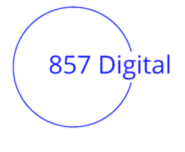Types of Search Engine Optimization
On-Page Optimization
Improving pages so they rank better.
Off-Page Optimization
Improving you are seen on the web.
Technical Optimization
Making sure your site is fast and usable.
SEO projects generally involve three stages: optimizing your web pages, optimizing your how you are seen by search engines and optimizing your web technical systems.
- On-Page Optimization: On-page optimization involves optimizing elements directly on a website to improve its search engine ranking. Key factors include:
- Keyword Research: Identifying relevant keywords and strategically placing them in content.
- Content Quality: Creating high-quality, relevant, and engaging content that satisfies user intent.
- Meta Tags: Optimizing meta titles and descriptions to accurately represent page content.
- URL Structure: Creating clean and user-friendly URLs that include relevant keywords.
- Header Tags: Proper use of header tags (H1, H2, etc.) to structure content and highlight key points.
- Image Optimization: Optimizing images for faster loading times and adding descriptive alt text.
- Off-Page Optimization: Off-page optimization focuses on improving a website’s reputation and authority through activities external to the site itself. Key components include:
- Link Building: Acquiring high-quality backlinks from reputable websites to boost credibility.
- Social Media Presence: Engaging in social media platforms to increase brand visibility and reach a broader audience.
- Influencer Marketing: Partnering with influencers to promote the website and its content.
- Online Reviews: Encouraging positive reviews to build trust and credibility.
- Technical Optimization: Technical optimization involves improving the technical aspects of a website to enhance its performance in search engines. Key considerations include:
- Site Speed: Ensuring fast loading times to provide a better user experience.
- Mobile Friendliness: Optimizing the website for mobile devices, as search engines prioritize mobile-friendly sites.
- Crawlability: Making sure search engine bots can easily crawl and index website content.
- Sitemap: Creating and submitting an XML sitemap to assist search engines in understanding the website’s structure.
- Robots.txt: Configuring the robots.txt file to control which parts of the site search engines can or cannot crawl.




